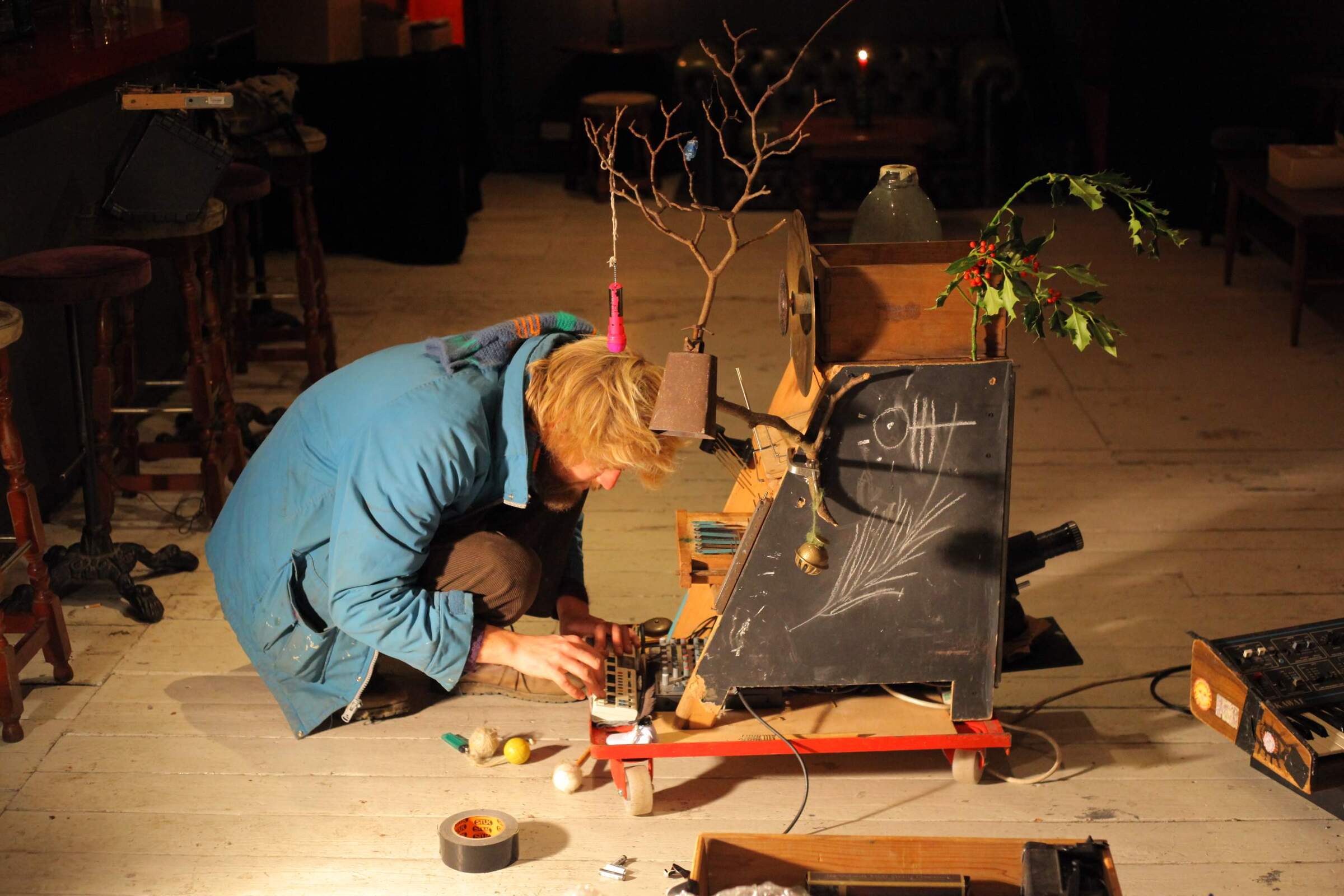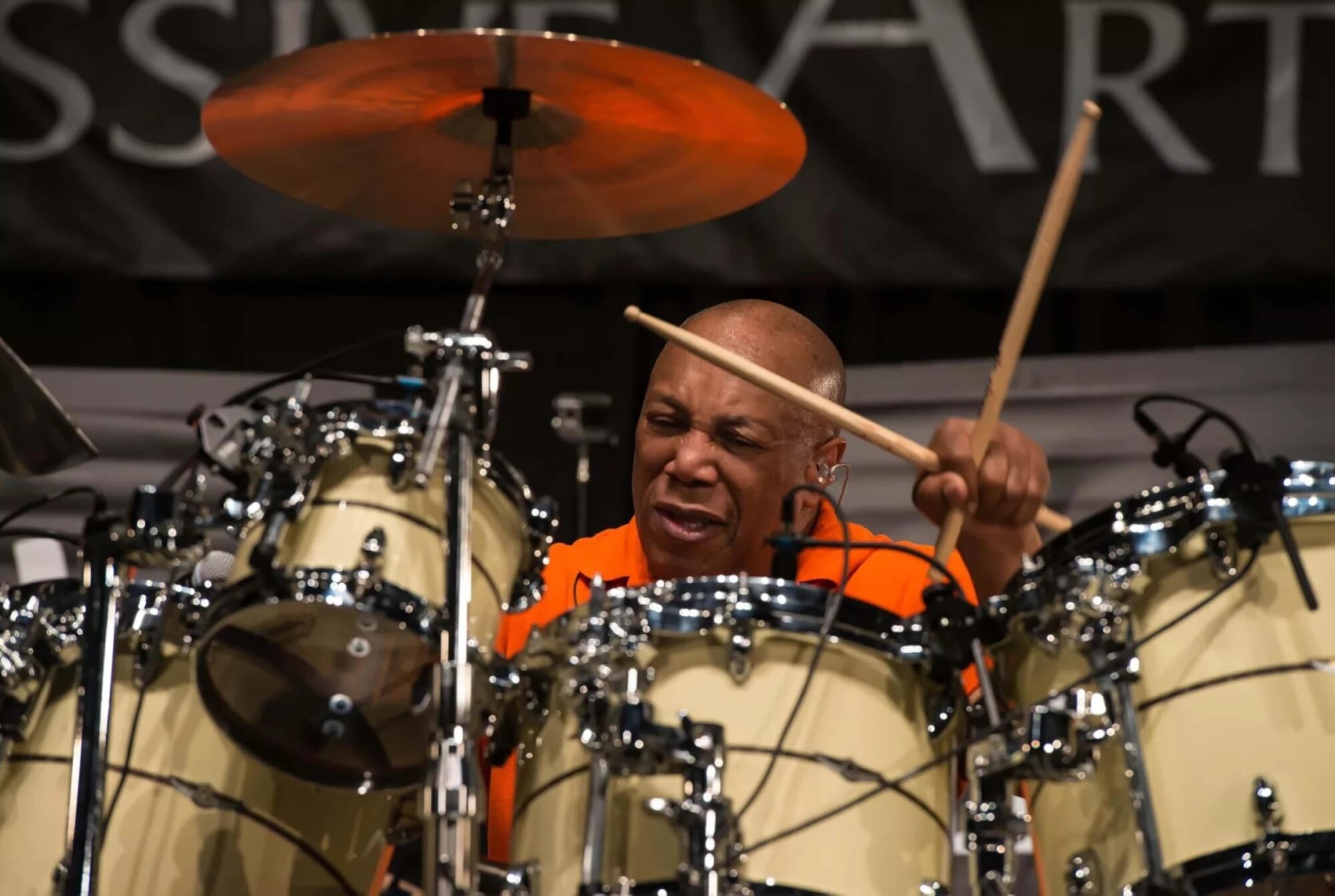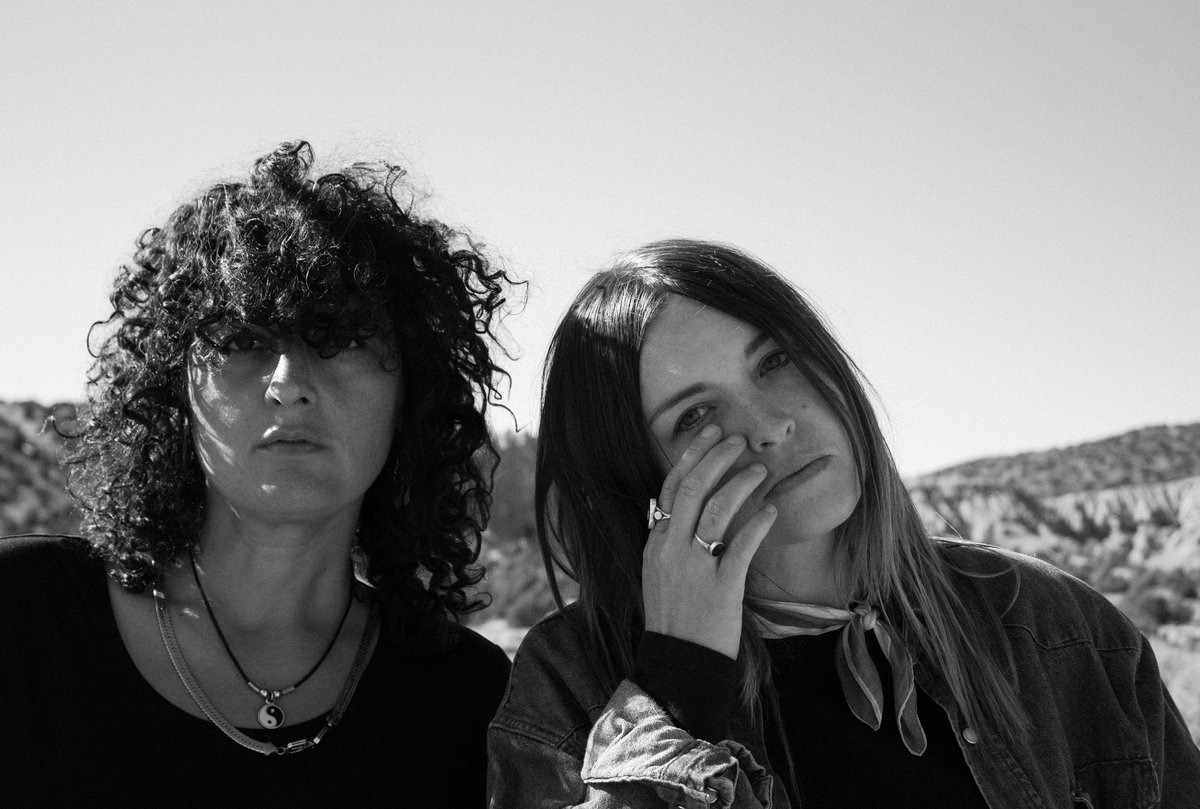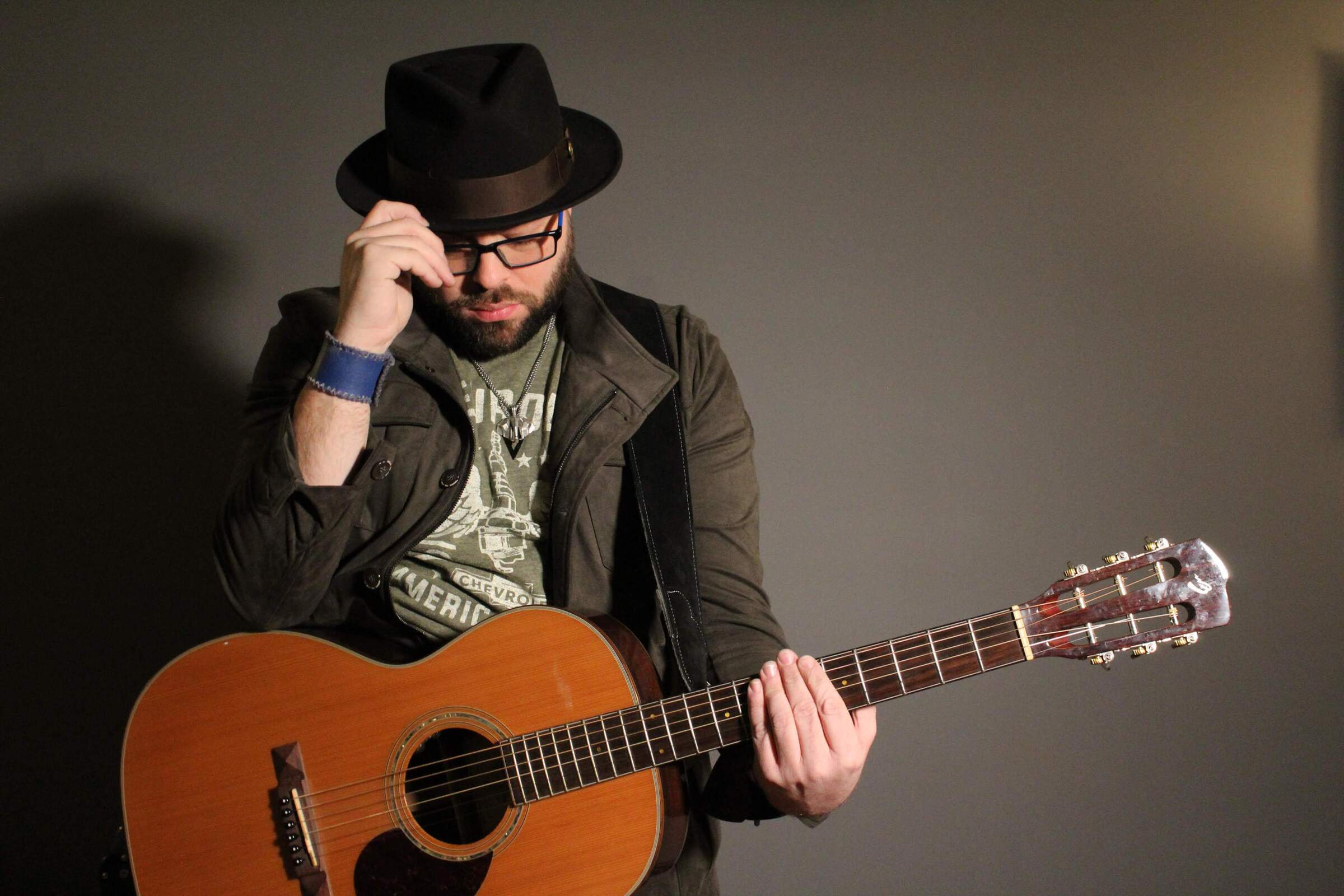Folklore Tapes | Interview | “Reinterpreting England’s folklore, myth, and magic through diverse artistic expressions”
Folklore Tapes epitomizes a dynamic multi-disciplinary arts collective dedicated to exploring and reinterpreting England’s extensive folklore, myths, and cultural narratives through a diverse array of artistic mediums.
Embracing DIY ethos at its core, the collective seamlessly integrates music, visual art, and meticulous historical inquiry to construct immersive experiences that intricately weave together historical legacies with contemporary artistic expressions. Each meticulously curated release exemplifies a dedication to artisanal craftsmanship, characterized by bespoke handmade components that underscore a profound reverence for thematic depth. Encouraging a collaborative ethos, Folklore Tapes cultivates a cohesive community among its artists, engaging in projects spanning from vinyl productions to experiential installations. Initiatives such as the Ceremonial County Subscription Series underscore the collective’s ongoing commitment to pushing creative boundaries, inviting audiences to embark on a nuanced exploration of England’s landscapes and cultural heritage.
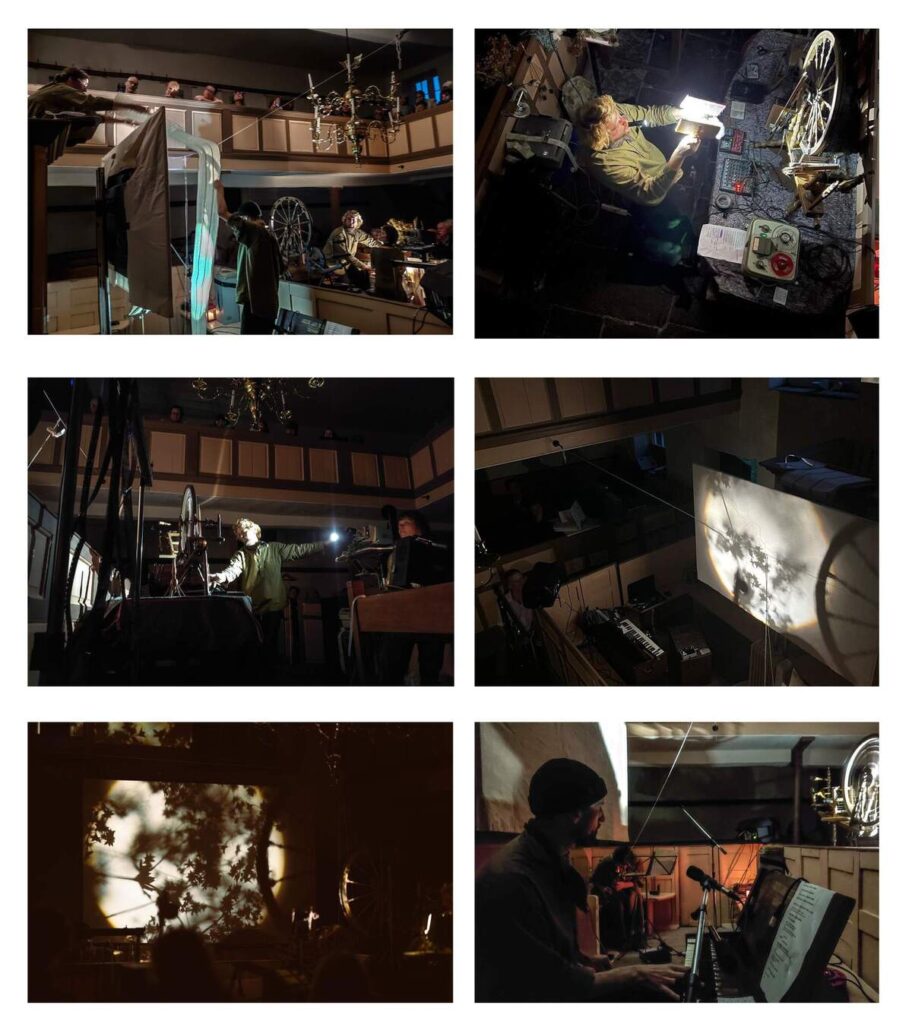
“Reinterpreting England’s folklore, myth, and magic through diverse artistic expressions”
What is the concept behind the Folklore Tapes label?
David Chatton Barker: The concept is simple: Folklore Tapes (FT) integrates music, visual art, history, and local landscape.
Folklore Tapes is a contemporary multi-disciplinary arts collective focused on reinterpreting England’s folklore, myth, and magic through diverse artistic expressions. The project’s core mission is to revive the nation’s folk heritage, renewing interest in its rich cultural tapestry by exploring new forms of expression that resonate with diverse audiences. These modern interpretations defy genre conventions, allowing the subject matter to shape the unique sounds produced.
Over the past thirteen years, Folklore Tapes has commissioned artists and writers to creatively reimagine folklore, fostering a deeper connection to our collective past with a strong emphasis on engaging directly with the surrounding landscape. By approaching this endeavor with a contemporary perspective, the initiative addresses memories of a vanishing England, offering a culturally enriching viewpoint. FT’s output spans immersive live shows, published books and pamphlets, vinyl records, online sound archives, guided walks, and art installations. The concept aims not only to provide a creative platform for artists but also to disseminate folklore widely.
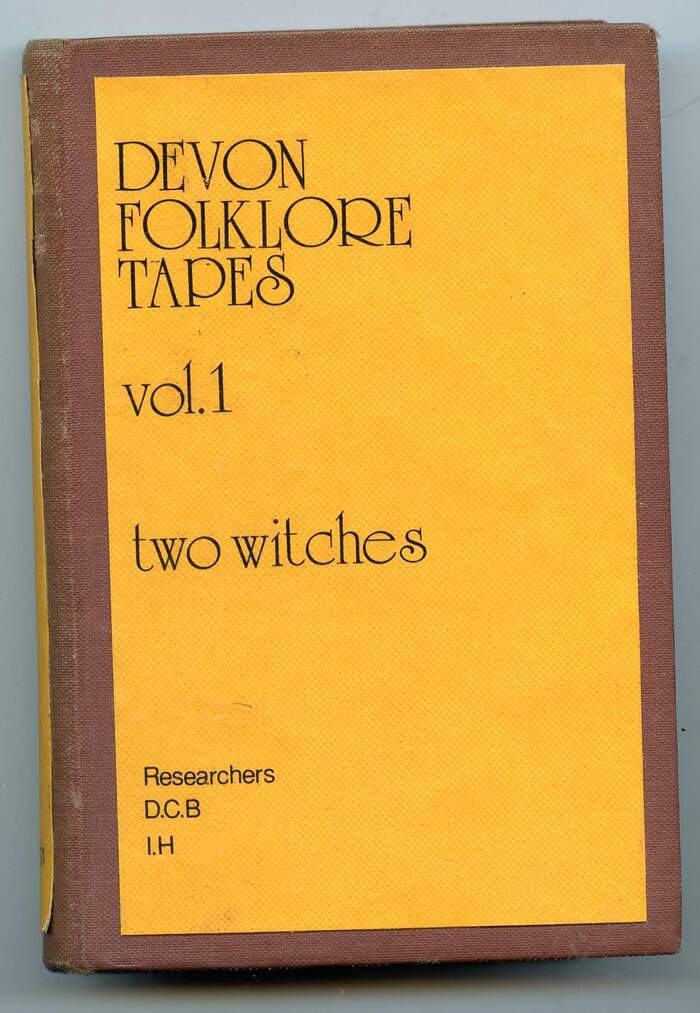
I would love it if you could share some background about your upbringing and your first adventure into music, so that we can see how that is reflected in Folklore Tapes.
My upbringing was pretty standard. It was quite different from my son Rowan’s upbringing now, surrounded by very active artistic parents deeply involved in the art and music universe. I grew up in Flixton, a suburb of Manchester. Weekends often meant trips to the moors of the Peak District and occasionally the Lake District, which fostered a strong early connection with those landscapes. With my mum being French, we also spent time each year visiting my French relatives, giving me a European flavor from a young age. Both my parents were teachers—my mum taught languages and my dad was an art teacher—so our home was filled with art on the walls, art books, and occasional visits to art exhibitions and openings. My dad’s passion for music exposed me to a variety of musical styles growing up.
When I turned 14, my dad gave me his record collection along with his K1000 Pentax camera. My older sister Rachael was already deeply into music, particularly bands like Guns ‘n’ Roses and Nirvana in the early 90s, which influenced her clothing and social circle. Her expanding musical interests were very inspiring to me. My own interest in music started early—I began buying cassette tapes from £1 bargain bins at Woolworths when I was around 7 or 8 years old. During my formative years between 8 and 10, I remember recording tapes in my bedroom with friends during sleepovers, often playing keyboards and rapping. I wish I still had those early tape experiments!
It’s worth noting that during this time and through my teens, I had no formal musical training. This unconventional approach later influenced how I created music, setting me apart from my peers.
My earliest musical love was Michael Jackson, and I even made a scrapbook dedicated to him, filled with magazine clippings and my own drawings of him. In my teens, I discovered vinyl and developed a passion for discovering new artists, which quickly turned into an obsession. Manchester offered amazing record shops, and my favorites were Vox Pop and Vinyl Exchange. I started DJing in Manchester at The Temple when I was 17.
Around age 16 or 17, after starting college, a significant change occurred in my life: both my parents found new partners almost simultaneously. My mum met a French man and decided to move back to France, while my dad relocated down south to be with his new partner. As a result, I ended up staying in my dad’s house and rented out the spare rooms to my college friends. Discovering independence at 17 was both exciting and challenging, marking a pivotal time of personal growth for me.
During this period, I was studying art foundation in Manchester, developing my own visual language. At 19, I was accepted into a fine art degree program at Plymouth University in Devon, located in Exeter. Moving away from a big city was a significant transition, and I ended up living in Exeter for the next 8 years, drawn by a vibrant community of artistic friends. Art school was a fertile ground for creativity, and soon I began organizing music events and performance art happenings around town. A pivotal moment was the transformation of a bookshop basement called King Ludd into an underground venue, which became central to the emerging music and arts scene in Exeter (though it lasted only two years due to the bookshop closing down).
During this time, I started delving deeper into playing music, exploring techniques, sound art, and film installations. Initially more of a collector and DJ, I made my first record at 20—a seven-inch dub plate titled ‘Two Cities,’ entirely composed of field recordings from Exeter and Berlin. This record explored the concept of musical photographs, pairing 30-second recordings with corresponding photographs. I crafted an elaborate sleeve for ‘Two Cities,’ featuring hand-processed photographs and screen-printed artwork. Building on this concept, I created ‘Twelve Stations,’ a dub plate where I traveled to 12 railway stations across Britain, capturing both audio and visual snapshots. Coincidentally, during this time, I discovered the Exeter Railway Brass Band and composed 30-second pieces based on each station for them to play. These projects became part of my final degree installation at art school, marking a significant fusion of visual art, place, and music in my practice.
Living in Devon also deepened my connection to the surrounding moors and natural world, where I spent countless hours hiking, camping, and absorbing the area’s spirit. It was during this time that I began noticing the rich folklore embedded in the region. A chance encounter with a book sale trolley at the local research library further solidified the direction I was about to take.
With no formal music training, I turned to instrument building as a means of expression, believing that creating an instrument meant mastering it without being constrained by historical conventions or tunings. Initially driven by aesthetics, each instrument’s design naturally reflected its sound. Instrument building has since become a cornerstone of my creative process, continually evolving alongside my work.
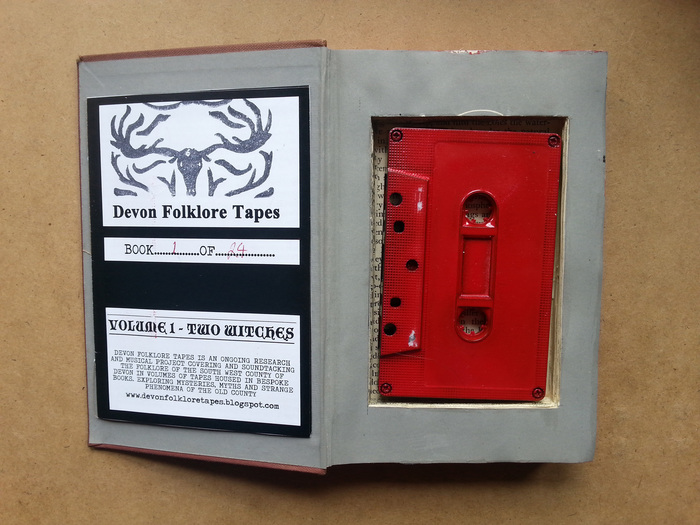
What are some of the recent projects you’ve worked on? Please take a moment to share further details about them.
Over the past eighteen months, and throughout the previous thirteen years, I’ve had the privilege to engage in a diverse array of projects. I’ll highlight three notable ones.
The first was a commission from an arts organization in Brittany called Le Bon Acceuil. Folklore Tapes was invited to Rennes in Brittany to explore and respond to the life of the reputed witch Naia la Sorciere. This marked our first international FT project, where Sam McLoughlin and I spent time in Naia’s village, Rochefort-en-Terre. Despite scarce historical records, we based our work on an early 1900s article by journalist Charles Géniaux. The outcome was a split LP titled ‘Naia La Sorciere de la Rochefort-en-Terre (BFTI),’ featuring sonic interpretations by The Universal Veil (Sam and myself) and Brittany musician Le Diable Degoutant (Pauline Marx).
The second project, ‘Larksong,’ was commissioned for the British Textiles Biennale. Collaborating with artists Nick Jordan and Jacob Cartwright, we explored the history of Goodshaw Chapel in Rossendale. Nick and Jacob created a film capturing the surrounding landscape—cloughs, rivers, and moorlands—imbued with remnants of the textile industry. For this, Sam McLoughlin, Mary Stark, Bridget Hayden, and I crafted an immersive live performance in the chapel, blending traditional instruments, voice, modified spinning wheels, analogue projectors, music boxes, and field recordings. We also produced a 12” record including an epic poem by Emily Oldfield, packaged in a screen-printed sleeve with a detailed booklet—a format now iconic for FT releases.
The last project I’ll discuss is very personal: Brown Wardle Hill. From 2017 to 2023, I lived on a farm in Whitworth, on the edge of the South Pennine Moors, deeply connecting with the local landscape. During this time, I unearthed a trove of lore and legend centered on Brown Wardle Hill and its surroundings. Compiling my findings into a research book, I translated these discoveries into a series of record releases and performances. I forged collaborations with the Whitworth and Healey Vale Brass Band, revisiting a brass sound I’d explored over a decade earlier.
Brown Wardle Hill completes a trilogy of vinyl and book releases linked to Whitworth’s moors. It follows ‘The Queen of the Well (LFTV)’ in 2017—a record and booklet accompanied by a live puppet show—and ‘Tales of the Monstone (LFTVI)’ in 2019. This latest release comprises twelve compositions inspired by local lore, reflecting my deep emotional tie to the area. Recorded in the brass band club’s rehearsal room in Whitworth, the music, played by seven band members, was captured digitally and on 4-track tape by Sam McLoughlin. The album cover features a photograph of a clay object I discovered while rambling on Whitworth moorland in 2016—a talismanic find that later symbolically split in two as my time in Whitworth came to an end, a poignant moment detailed in my book ‘Lorelines.’
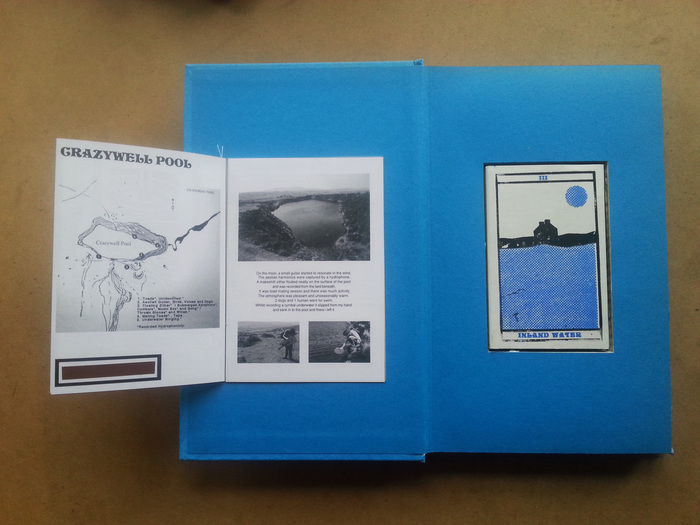
When did you decide that you wanted to start releasing music? What brought about that decision for you?
I had been avidly collecting records and tapes for many years, developing my own ideas about the intersection of music and visual art. There came a point where I felt compelled to shift from merely collecting music to actively creating and sharing it—it was a natural progression for me. I also felt a strong urge to contribute a more handmade approach to music releases, contrasting with the factory-produced packaging prevalent at the time.
After finishing art school, I found myself exploring ways to bridge my interests in visual art and music. As I delved into researching folklore, it struck me as the perfect bridge. Around this time, I met Ian Humberstone, who lived nearby and was already making waves in the local DIY music scene. Crucially, Ian also had a background in history and folklore. Despite knowing of each other for years, we finally connected when he needed rubber stamps for a band staying with him.
Ian and I realized we shared similar ideas about integrating folklore with music, prompting us to collaborate. Knowing Ian was soon leaving the city added urgency to our plans—we wanted to create something sustainable despite the distance. We decided our first project would respond directly to a person or place, settling on the theme ‘Two Witches.’ Each of us chose a reputed witch from Devon’s history and crafted a soundtrack imagining their lives, akin to composing a film score for a movie that never existed.
For our debut release, packaging was crucial. Inspired by source materials from books, we opted to house our tape in a book format. Years earlier, I had crafted a tape housed in a hollowed-out copy of the Observers Book of Music, a concept we reprised for ‘Two Witches.’ The response was unexpectedly enthusiastic—our editions quickly gained a reputation for collectability, often fetching several times their original price online. While we could capitalize on this, I’ve always maintained a commitment to affordability, believing these releases should remain accessible and inclusive.
Financially, Folklore Tapes has been about breaking even and reinvesting in future projects rather than turning a profit. I’m admittedly not the best businessman, but for me, Folklore Tapes isn’t just a business venture—it’s a passion project. It’s incredibly fulfilling to create editions that resonate with people worldwide, turning each release into a cherished art object.
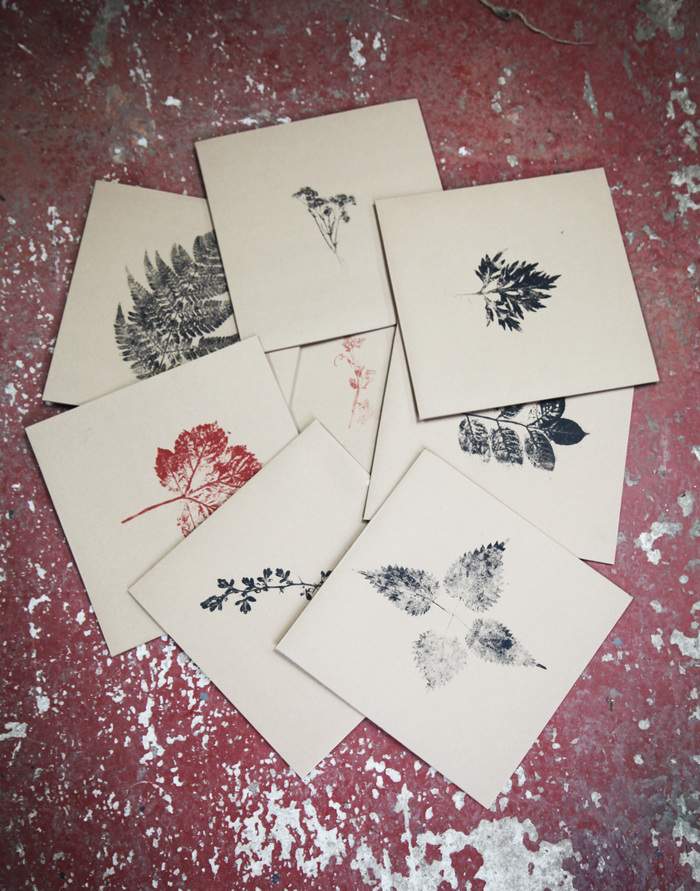
How do you select your artists?
The process has always been very organic for us. It typically begins with inviting friends into the project and gradually extends to include artists we meet at shows and similar events. It operates like a large family, where connections between artists form naturally, fostering friendships and creative collaborations.
For me, grassroots music is about connecting with like-minded artists and discovering shared fertile ground to explore together. At Folklore Tapes, projects are usually commissioned or invitations extended to contribute to specific themes. It’s a reciprocal process where each project starts with an invitation.
Our approach differs from traditional record labels in that we don’t typically accept demos. Instead, if an artist has created a record or has an idea that aligns with the thematic approach of Folklore Tapes, we enthusiastically embrace it.
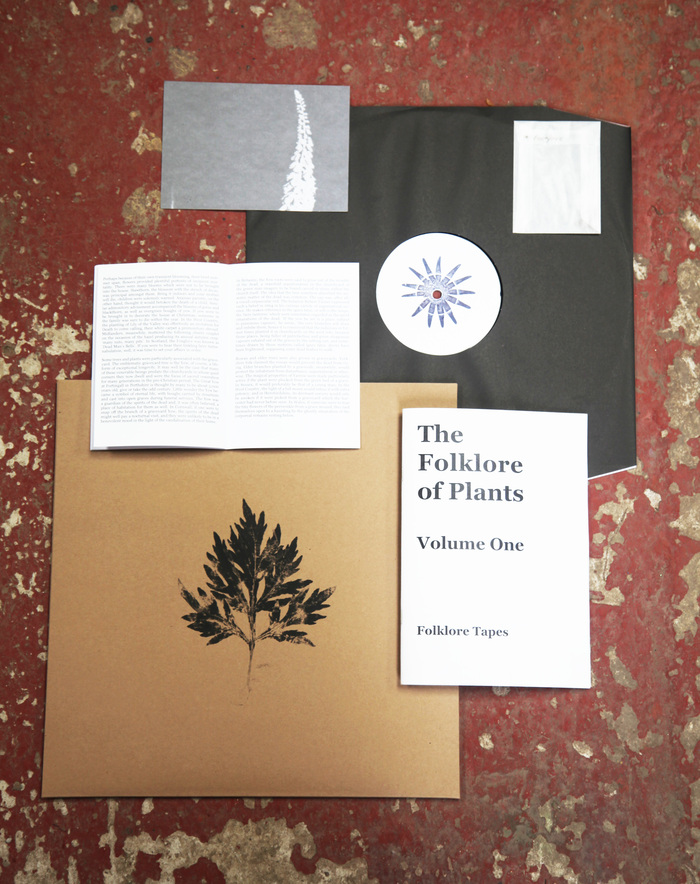
Is artwork an important part of a release?
Artwork plays a crucial role in our releases at Folklore Tapes. Coming from a visual arts background heavily influenced by Fluxus, Dada, and Eastern European posters, my approach to artwork has been deeply shaped by these influences. My early experiences collecting vinyl and designing posters in my late teens directly informed my visual communication skills. I’ve always been drawn to the concept of artwork as a multiple, a notion pioneered by Fluxus in the 1960s and 70s—why should a handcrafted piece of art be limited to just one person?
With Folklore Tapes, I aimed to merge this artistic approach with music releases from the outset. Artwork and music are harmoniously intertwined in our projects, often featuring handmade components. This is especially evident in our expansive box sets, where we incorporate maps, prints, postcards, and booklets to enhance the immersive experience of the subject matter. The artwork of a release profoundly influences the overall impression, from the initial impact of the cover to the subsequent listening experience. This impact is diminished when artwork is reduced to a small square on a computer or phone screen.
From the beginning, Folklore Tapes has embraced a holistic approach to its projects. Field trips are essential for us to connect deeply with a place and imbue our recordings with a sense of depth and authenticity. During these trips, we capture photographs, make drawings, record field sounds, and collect natural elements. All these components are integrated in the studio to create cohesive artwork that complements the music. We often include tangible tokens like pressed flowers, leaves, seeds, and mono prints, further enriching the physical experience of our releases.
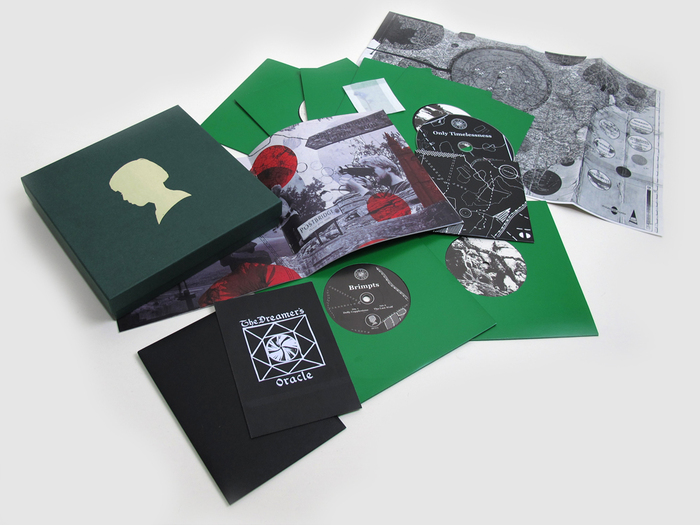
Can you tell us more about the releasing process in-depth?
Folklore Tapes operates as a cottage industry project with DIY ethos at its core. The level of detail invested in each project naturally stems from its thematic content.
Each release involves multiple handmade stages. There are significant differences in the processes between releasing a cassette and releasing a vinyl, primarily due to production timelines and costs. For instance, we can turn around a cassette release in about a week, whereas vinyl production typically takes 3-4 months and involves substantial financial investment.
Most of our releases require hand printing, sticking, sewing, hand numbering, and stamping. To streamline these processes, Sam and I often work in batches, forming a production line of two people.
Do you act alone in the business or do you have any partners that you operate with?
I initially started the project with Ian, and he has been either behind the scenes or at the forefront of operations over the past thirteen years. More recently, Sam McLoughlin has taken on a central role in managing the projects, largely because of our proximity and ongoing collaborations. While I’ve been the constant central operator for the project throughout the years, having help has been incredibly valuable.
What are some future plans for the label?
Looking ahead, we aim to expand into more live performances and installations. I’m also interested in developing a Folklore Tapes music library archive, where our music is catalogued and available for use in film and TV. Essentially, the plan is to continue our current path and hope that people remain interested in what we’re doing.
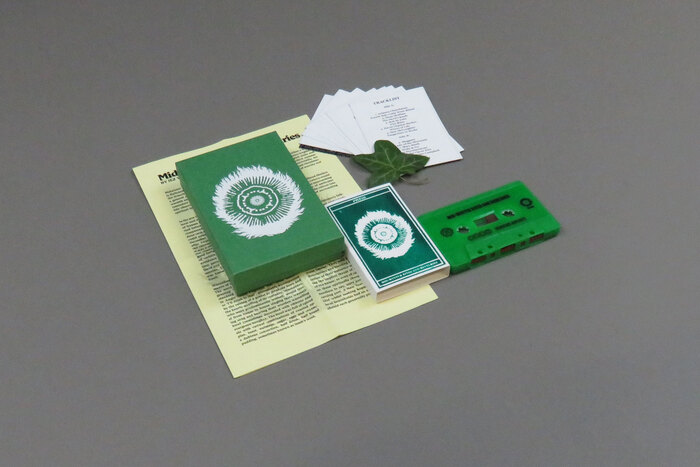
What are some of the latest releases our readers should get into?
One of the most exciting recent releases to explore is the Ceremonial County Subscription Series. This series offers a unique opportunity to delve into the project, featuring 48 mini albums that each explore a different county of England. It’s a comprehensive project that involves our entire family of artists and introduces some new talents to the project as well.
Klemen Breznikar
Folklore Tapes Official Website / Facebook / Instagram / Bandcamp

